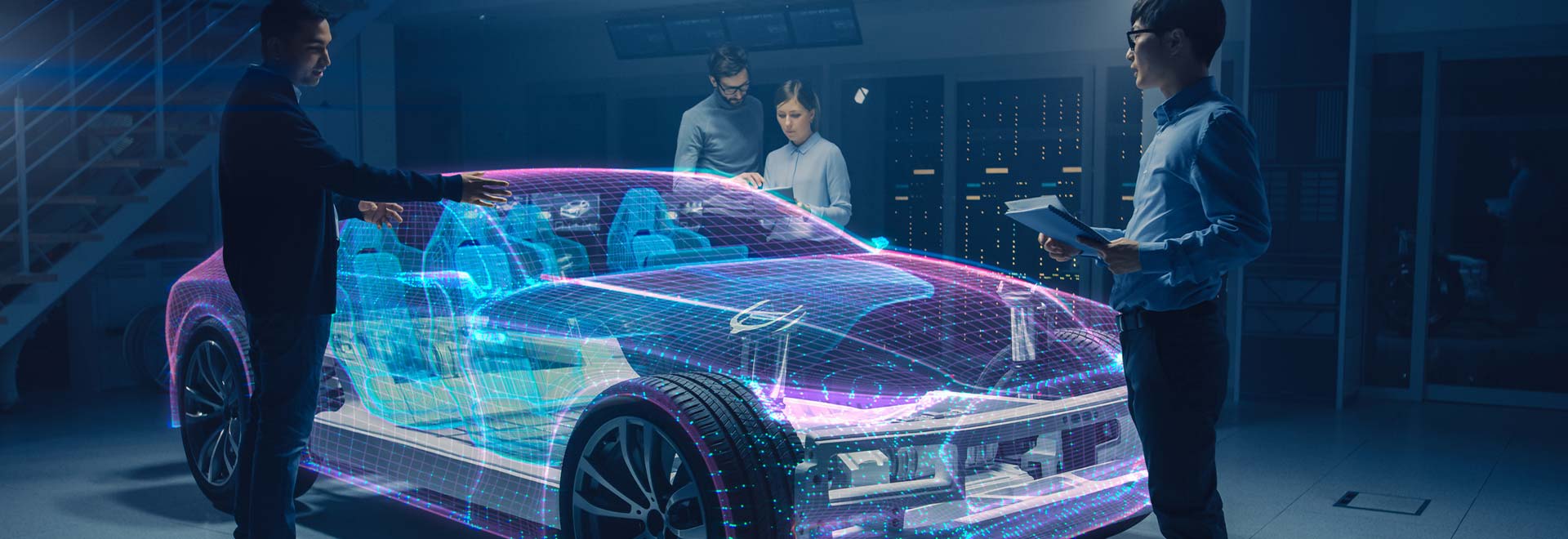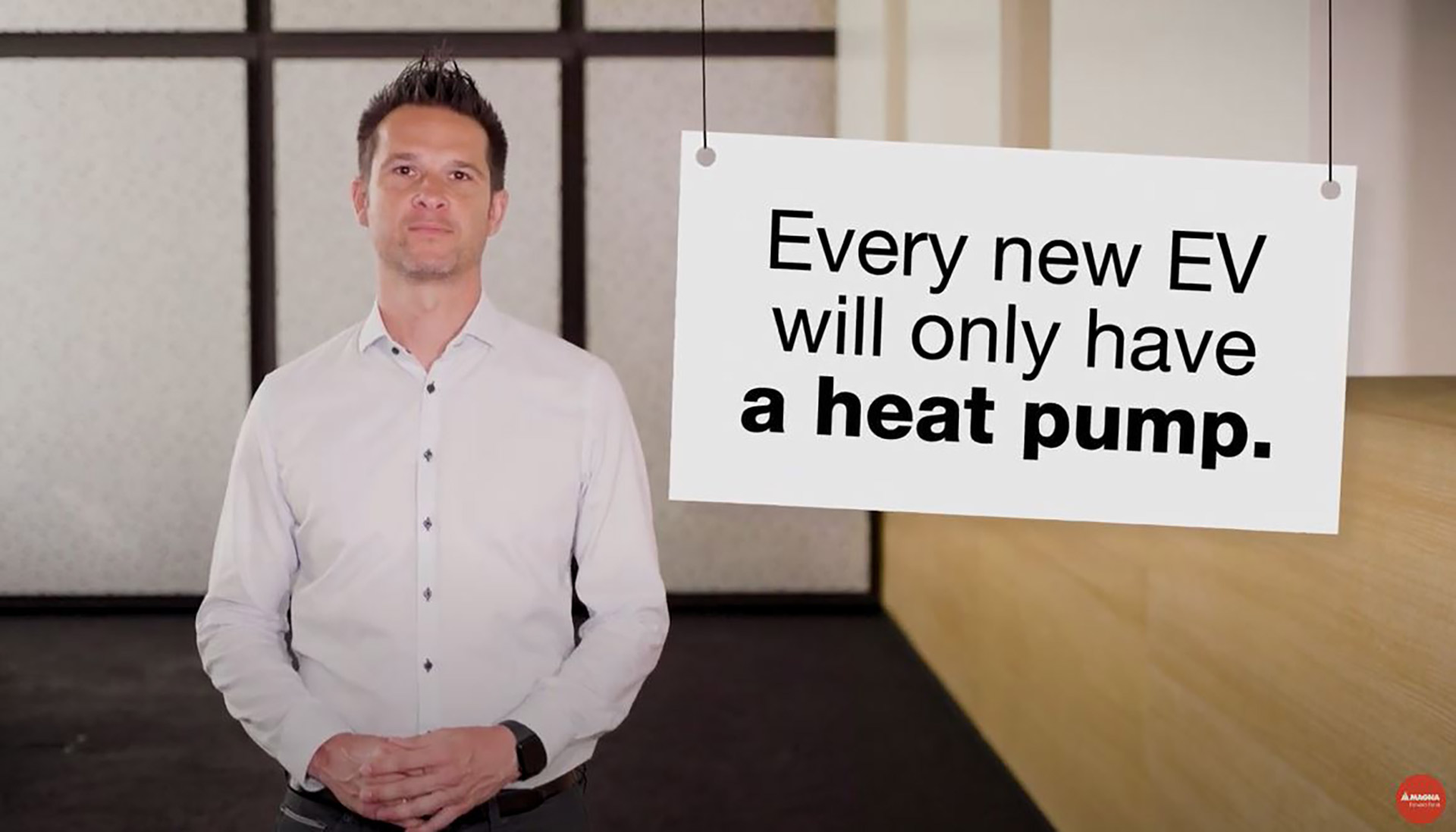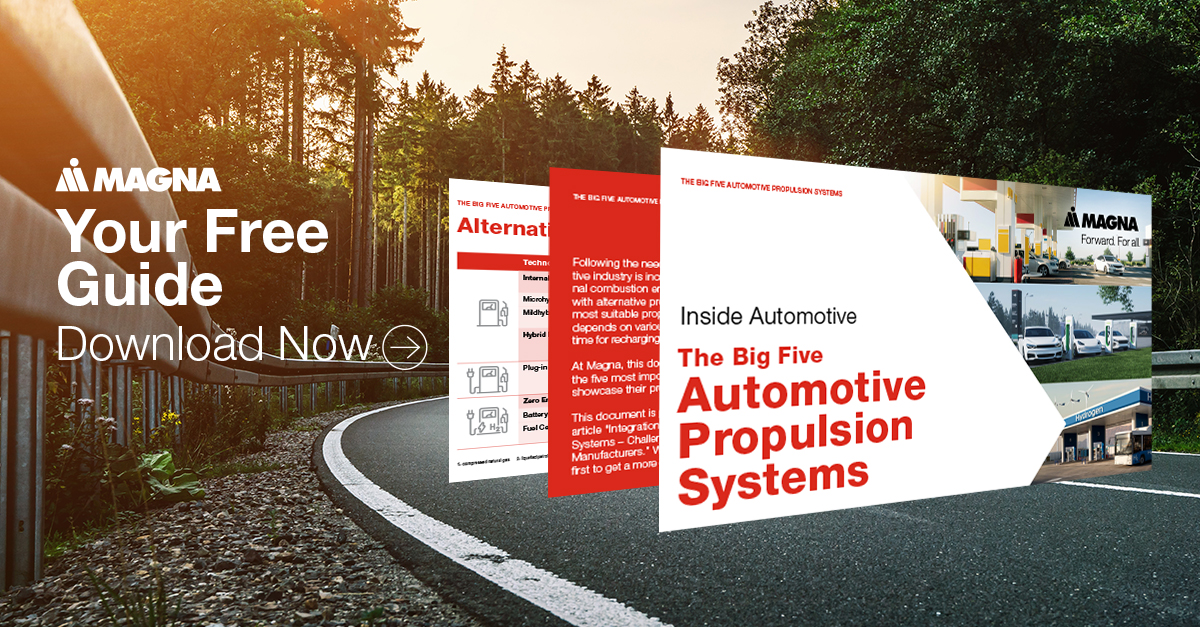DEVELOPMENT AND VALIDATION – IN SIMULATION AND ON THE TEST RIG
Generally, when designing a new vehicle, the thermal system development should not start later than the concept phase. As soon as the vehicle’s basic architecture, design and performance requirements are defined, the conceptualization of the thermal system can begin. After that, the development is carried out in three stages, with the physical testing of the actual vehicle occurring in the last stage.
The simulation phase offers the most freedom to determine relevant parameters across the whole thermal management system. On the system test rig, the thermal system’s performance as well as its long-term stability is validated. For example, the robustness of oil flow in the refrigeration circuit. The compressor needs oil for lubrication, which circulates together with the cooling agent. But the more complex the system and the longer the lines, the more oil will accumulate and settle throughout the system – and will then be missing from the compressor.
Consequently, it is of utmost importance to identify potential challenges beforehand so the system can interfere in time in case of danger, even from the software side.
Expertise and the right equipment make all the difference
Magna can provide new entrants into the BEV market with everything they need to develop a new vehicle. Established OEMs have the goal of using available system concepts from already serially produced vehicles, even for new models.
However, an already existing system cannot be fully integrated into a different vehicle, and many components must be re-constructed and re-developed from scratch. This can be the case if vehicle requirements change or if the vehicle’s installation space makes it necessary to rearrange components due to the car’s design. Even changing the conduits may require redoing preliminary validation of the overall system to prevent problems during the installation process.
For this reason, Magna has developed an intricate system test rig with two independent, but couplable climate chambers for comprehensive validation. The rig can reproduce any imaginable scenario of thermal management, even especially challenging constellations of high environmental temperature, a cabin with intense need for cooling and active fast charging at the same time.
FAST CHARGING AS THE GREATEST CHALLENGE OF THERMAL MANAGEMENT
When constructing the thermal system, the combination of fast charging the traction battery and maintaining the driver’s cabin comfort poses the greatest challenge. This is because the battery generates a large amount of heat that needs to be diverted when fast charging. At the same time, it is in the passenger’s interest to keep the cabin nicely climatized.
Therefore, compromises need to be made. An enormous cooling system would be required to keep the battery at optimal operating temperature while fast charging, especially during high environmental temperatures and while simultaneously cooling the cabin. Depending on the manufacturer’s requirements, the middle ground needs to be found or a decision needs to be made: Should charging times be extended or does the passenger compromise for less comfort?
Of course, the vehicle’s target group focus plays a major role in these types of decisions. A comfortable upper-class vehicle cannot compromise on cabin comfort as much as an inexpensive car can.
Higher power output does not have to come with lower efficiency
Another challenge for the thermal management system is the combination of a higher demand for power output with a lower target temperature inside the driver’s cabin. Usually, the cabin is cooled down by inlet air between 2°C and 10°C, which causes low pressure and hence, low density in the cooling agent.
This decreases its efficiency and means that the cooling agent compressor has to have greater dimensions or be able to spin much faster. The battery cooling requires higher target temperatures, and due to the suction pressure, the system can work more efficiently and perform better.
In principle, the regulation in EVs is facilitated by electrically powered scroll compressors. Their performance can be regulated directly and electrically over a wide area, contrary to the belt drive-powered combustion vehicle, which is regulated through valves on the piston compressors. Spiral compressors excel due to better regulation and quieter operation, which is especially important for BEVs.
HEATING A BEV – WILL ALL FUTURE BEVS HAVE A HEAT PUMP?
Heating the BEV’s driver’s cabin usually poses no problem. However, truly efficient heating is a different topic. At first glance, the solution seems simple enough: A high voltage heater immediately generates warm air. This principle works in both a parked and a driving car and enables a heating behavior that has not been possible with conventional vehicles.
Additionally, the maximum demand for heat can be reduced through preconditioning. In simple thermal management systems, the battery’s lost heat is diverted towards the environment. However, this thermal energy can be reused by utilizing it for the cabin’s heating via a heat pump. This way, either the heat pump’s condenser warms the cooling agent’s circuit, which heats the cabin’s air through a recuperator like in petrol-fueled cars, or a cooling agent condenser in the A/C transfers the lost heat directly to the cabin.
Fitting use cases for heat pumps
From the perspective of thermodynamics, a heat pump seems to be the ideal solution for cabin heating because it utilizes the electrical propulsion system’s lost heat. In practice, a heat pump is not applicable for every use case – at least not as the only thermal management system. A heat pump can fully make use of its advantages when the vehicle is driven for longer distances and is seldom parked.
Its theoretical advantages do not come into play with short distance driving or typical commuting behavior. Depending on the implemented type of heat pump system, the slower warm-up phase can have negative effects on efficiency. Components and fluids have to reach operational temperature until usable thermal energy becomes available. This process takes a certain amount of time and requires a certain amount of energy itself. In contrast, high voltage heating can provide thermal output immediately after turn-on and therefore, provides unbeatable comfort.
As the sole thermal management system, the heat pump cannot completely satisfy, especially since the increased complexity also raises overall costs. Consequently, high voltage heating is still viable for short-haul vehicle classes. For vehicles in more expensive market segments, a combination is used to provide both swift heating for the driver’s cabin through resistance heating, and a heat pump for efficient thermal management while driving long distances. Ideally, the end customer does not notice the switching between both systems and only enjoys their seamlessly interconnected benefits.
EXPEDIENT CONCEPTION PREVENTS THE NEED OF RE-DEVELOPMENT LATER
An extensively competent development partner can make the best use of, and even possibly shorten, the required development time frame if they are included in the process as soon as possible. In cooperation with the OEM, they can help identify optimal conception and construction of thermal management systems regarding the specific use case. In doing so, it is generally wise to reduce the number of variants. Sensibly defined requirements account for satisfactory impact on all target markets.
In some cases, it can be reasonable to develop two systems for one vehicle parallel to each other – one with and one without a heat pump for cabin heating. This way not only is it possible to adapt the vehicle according to the target market, but there can also be economic benefits for the OEM. For example, the heat pump could be offered as an optional feature to reap additional profits. Last but not least, being able to offer a particular energy efficient thermal system can also be an important and possibly decisive sales argument for end customers.




.tmb-widescreen.webp?sfvrsn=8d57edff_1)


